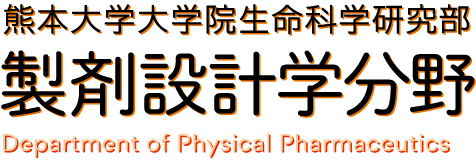6-O-α-(4-O-α-D-glucuronyl)-D-glucosyl-β-cyclodextrin: solubilizing ability and some cellular effects.
Tavornvipas, Sumitra; Hirayama, Fumitoshi; Arima, Hidetoshi; Uekama, Kaneto; Ishiguro, Toshihiro; Oka, Masahide; Hamayasu, Kenichi; Hashimoto, Hitoshi.
Faculty of Pharmaceutical Sciences, Kumamoto University, 5-1 Oe-honmachi, Kumamoto, Japan.
Abstract
Some physicochem. and biopharmaceutical properties of a new branched cyclodextrin, 6-O-α-(4-O-α-D-glucuronyl)-D-glucosyl-β-cyclodextrin (GUG-β-CyD), were investigated. The interaction of GUG-β-CyD with drugs was studied by spectroscopic and soly. methods, and compared with those of parent β-CyD and 6-O-α-maltosyl-β-CyD (G2-β-CyD). The hemolytic activity of GUG-β-CyD on rabbit erythrocytes was lower than those of β-CyD and G2-β-CyD. GUG-β-CyD and G2-β-CyD showed negligible cytotoxicity on Caco-2 cells up to at least 0.1 M. The inclusion ability of GUG-β-CyD to neutral and acidic drugs was comparable to or slightly smaller than those of β-CyD and G2-β-CyD, probably because of a steric hindrance of the branched sugar. On the other hand, GUG-β-CyD showed greater affinity for the basic drugs, compared with β-CyD and G2-β-CyD, owing to an electrostatic interaction of its carboxylate anion with pos. charge of basic drugs. Thus, GUG-β-CyD may be useful as a safe solubilizing agent particularly for basic drugs.


